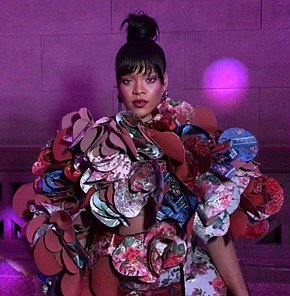Clothing, footwear, lifestyle, accessories, make-up, hairstyles, and body posture are all forms of self-expression and autonomy throughout a certain time and place in a specific context. [1] The phrase alludes to a style that has been designated as trendy by the fashion industry. The fashion system makes everything that is deemed fashion attainable and widely accepted (industry and media).
Sustainability has become a pressing concern for politicians, businesses, and consumers because to the increase in mass production of goods and clothes at reduced costs and on a worldwide scale. The English term for anything being "in style" derives only from the 16th century, but the French word mode, which means "fashion," dates back to 1482. There are other words that refer to the style and appeal ideas that come before mode. The idea of elegance first appears in Old French in the 12th and 13th centuries in the context of aristocratic preferences to enhance beauty and demonstrate refinement. Cointerie, the concept of making oneself more attractive to others through style or artifice in grooming and dress, also appears in a poem by Guillaume de Lorris from the 13th century that tells men that "handsome clothes and handsome accessories improve a man a great deal." According to Susan B. Kaiser, a fashion expert, everyone is "forced to appear" in front of others. [5] Everyone's appearance is judged, and this judgment takes into account factors like colors, fabrics, silhouettes, and how clothes look on different body types. Depending on the wearer's body shape, the way the garment has been cleaned, folded, repaired, or whether it is new, clothes that are identical in style and material might also look different.
Fashion has many diverse definitions, and its use is somewhat ambiguous. The term "fashion" denotes both similarity and difference, as in "the new fashions of the season" or "the fashions of the 1960s," which both suggest a general consistency. Fashion can refer to current trends, but it also frequently refers to clothes of the past. While a relatively exclusive, well-respected, and frequently wealthy aesthetic elite can define what is fashionable by creating an exclusive look, such as fashion houses and haute couturiers, this "look" is frequently created by drawing references from subcultures and social groups that are not considered elite and are therefore disqualified from defining what is fashionable themselves.
Fashion is a unique and industry-supported expression that is usually connected to the fashion season and collections, unlike trends, which frequently connote an odd aesthetic expression that lasts for a shorter period of time and is recognizable by visual extremes. Style is an expression that transcends seasons and is frequently linked to social indicators, symbols, cultural trends, and class (such as Baroque and Rococo). Sociologist Pierre Bourdieu claimed that fashion signifies "the current difference." [7]
Even though the terms "fashion," "clothing," and "costume" are sometimes used interchangeably, they are not the same thing. Costume now refers to fancy dress or masquerade wear; clothing denotes the material and the technical garment, devoid of any social significance or ties. Contrarily, fashion refers to the social and temporal framework that shapes and "activates" clothing as a social signifier within a certain moment and context. Giorgio Agamben, a philosopher, relates clothes to the quantitative concept of chronos, the personification of chronological or sequential time, and fashion to the qualitative Ancient Greek concept of kairos, which means "the proper, critical, or opportune moment." [8]
Although several high-end brands may use the word haute couture, only those who are members of the Chambre Syndicale de la Haute Couture[9] in Paris are authorized to use it.
[6] Haute couture is more aspired-to; it is frequently only worn by the wealthy and is inspired by art and culture.
Fashion is distinctive, self-fulfilling, and may play a significant role in a person's identity. Similar to art, a person's fashion choices should be an expression of their own tastes rather than necessarily being accepted by others. [10] The way someone dresses serves as a "societal development that always combines two contradictory concepts." In addition to being a safe and socially acceptable technique to set oneself apart from others, it also meets a person's desire for social adaptation and imitation. Sociologist Georg Simmel[13] stated that fashion "helped overcome the divide between an individual and his society" but philosopher Immanuel Kant thought that fashion "has nothing to do with true judgements of taste" and is instead "a case of unreflected and 'blind' imitation" [12]

Fashion is an additional form of art that enables individuals to express their distinct aesthetic preferences.